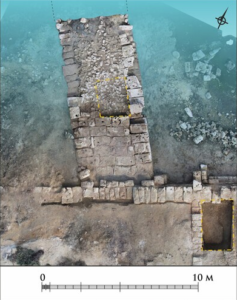An Archaeological Assessment of Parameters of Attractiveness of the Byzantine Port of Philoxenite, Lake Mareotis, on the Mediterranean Coast of Egypt
This article by Mariusz Gwiazda is available as open access in the International Journal of Nautical Archaeology thanks to the Honor Frost Foundation Open Access Award.
Absract:
 The establishment and development of ancient port cities involves a complex interplay of environmental, resource, and socio-economic factors. In this study, we explore the case of Philoxenite, an ancient and medieval harbour on Lake Mareotis, on the Mediterranean coast of Egypt, shedding light on its emergence as a port town within the broader context of the Byzantine Empire. Archaeological evidence from Philoxenite shows its landscape is marked by a sheltered bay and strategic modifications, highlighting the relationship between natural features and human interventions (the ‘available’ and the ‘modified’ landscapes). In essence, Philoxenite’s emergence underscores the delicate balance between nature and human agency, providing insights into complex decision-making based on an analysis of ‘parameters of attractiveness’ – processes that were inherent in ancient port establishments within the Classical world.
The establishment and development of ancient port cities involves a complex interplay of environmental, resource, and socio-economic factors. In this study, we explore the case of Philoxenite, an ancient and medieval harbour on Lake Mareotis, on the Mediterranean coast of Egypt, shedding light on its emergence as a port town within the broader context of the Byzantine Empire. Archaeological evidence from Philoxenite shows its landscape is marked by a sheltered bay and strategic modifications, highlighting the relationship between natural features and human interventions (the ‘available’ and the ‘modified’ landscapes). In essence, Philoxenite’s emergence underscores the delicate balance between nature and human agency, providing insights into complex decision-making based on an analysis of ‘parameters of attractiveness’ – processes that were inherent in ancient port establishments within the Classical world.




